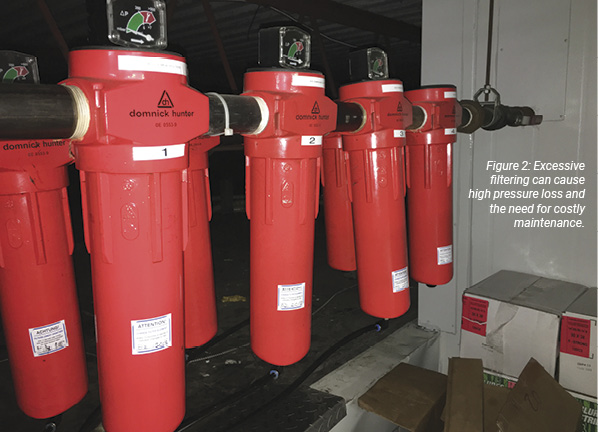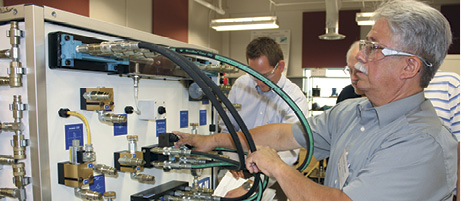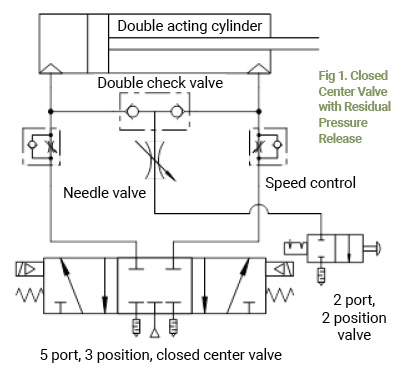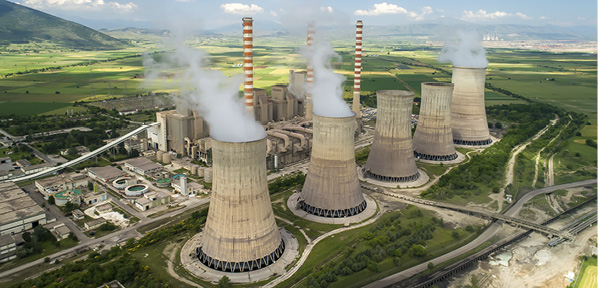Compressed Air Systems: The Cost of Filter Differential
By Ron Marshall, Marshall Compressed Air Consulting

Compressed air filters, despite modern and efficient design, do not maintain themselves. These elements remove particles and liquids, cleaning up the flow of air so the downstream compressed air uses can remain contaminant free. These items can have an effect on the system pressure and how efficiently the air compressors run. And sometimes the filters don’t operate as expected.
Filters come with various specifications, and most are rated using the ISO 8573 air quality specification that defines filter performance relating to maximum particle size capture. Should the filter element be designed to capture liquids, maximum oil capture is an important rating. It is important to realize the smaller the particle size rating and the lower the oil content, the more pressure drop will develop across filters at their full-rated flow.
Often two or three filters will be arranged in a series, with the first a coarse filter that captures large particles, the second a finer filter that might capture smaller particles and some liquids, and the third filtering minute particles and very small levels of liquid contaminants. Typically when the pressure drop across this kind of filter chain is measured, there is a significant loss detected. The loss often causes the need to increase discharge pressure of the compressor in order to maintain adequate pressure downstream of the filters.

The higher discharge pressure at the compressor causes higher power consumption. Every 2 psi in higher pressure consumes about 1% more compressor motor power for every cubic foot the compressor produces. And if the filters are installed between the air compressor and the system storage receivers, the pressure loss that occurs can rob the compressor of valuable effective storage, causing the compressor to rapidly cycle, wasting even more energy. This means filter design and maintenance is highly important to your system.
Some tips about filters:
- Understand your compressed air quality requirements. There is no need to provide high quality air to general compressed air demands. Excessively filtering increases annual maintenance and energy costs.
- Size the filters properly. A filter that is too small for peak flow will develop excessive pressure drop, affecting the performance of the connected equipment.
- Schedule regular maintenance. Too often filters are left unmaintained, and over time the pressure loss will affect the operation of downstream equipment. Eventually the internal element will fail, and no filtering at all will occur.
- Measure pressure drop. There should be some method provided to determine the pressure drop across the element, a sign that the filter needs to be changed. But realize even a dirty filter will have no pressure drop at times when no air is flowing through it, so this should be considered when you are checking pressure differential.
- Schedule regular element changes. Even if a filter has low differential, this does not mean that it is working. Coalescing filters will lose their ability to work effectively as they age.
- Maintain drains. If the filter is rated for oil removal, make sure the internal drain is working or the filter will fail.
Ron Marshall is owner of Marshall Compressed Air Consulting, a company that specializes in compressed air efficiency assessments. Visit www.compressedairaudit.com.
Join the LinkedIn discussion group: Compressed Air Efficiency







